The History of Hollywood Masonic Temple
Tag: Historic Hollywood
Hollywood Masonic Temple is a historic building on the south side of Hollywood Boulevard, between Highland Avenue and Orange Drive. It is on the Walk of Fame, adjacent to El Capitan Theatre. The building originally functioned as a meeting place for members of the Freemasonry fraternal organization during Hollywood’s golden past. Since then, the Masonic Temple has seen various uses and many ownership changes prior to becoming the home of Jimmy Kimmel Live!
A long list of Hollywood celebrities were Masons, including W.C. Fields, Cecil B. DeMille, D.W. Griffith, John Wayne, Roy Rogers, and Gene Autry. The original Hollywood Lodge of the Masons was located at the current site of the Dolby Theatre. To partly finance the new building, Hollywood real estate developer Charles E. Toberman and fellow member Charles Boag formed a Hollywood Masonic Club, offering life membership subscriptions for $100. The effort significantly reduced the property mortgage.
Hollywood Masonic Temple, also known as The Free and Accepted Masons of Hollywood Lodge No. 355 was constructed in 1921. The two-story, granite clad structure at 6840 Hollywood Boulevard was one of the most substantial buildings in Hollywood at the time. It had a billiard room, pipe organ, ladies parlor, ballroom, and lodge rooms.
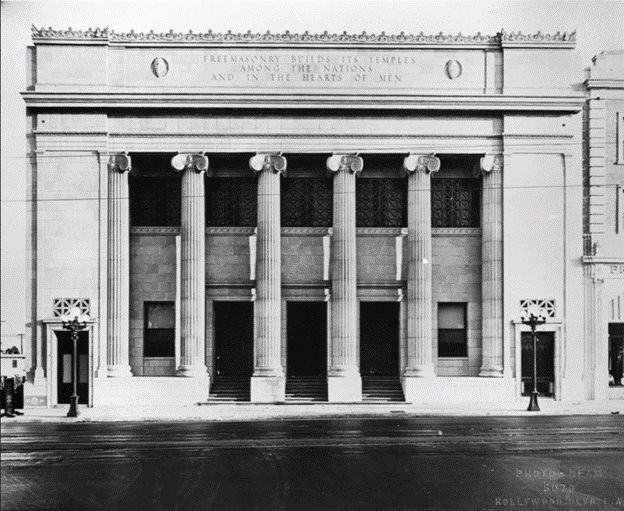
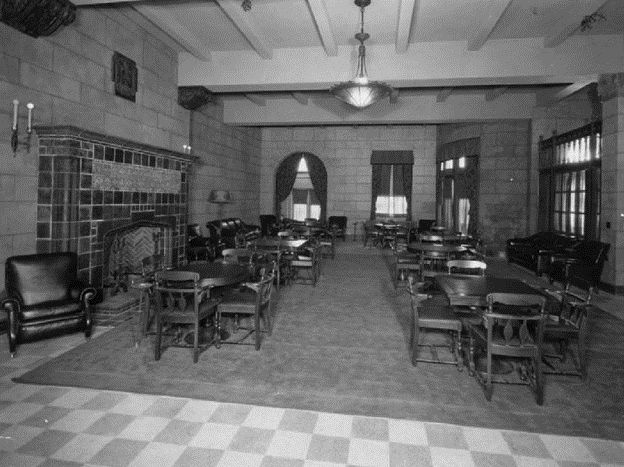
The building was designed by John C. Austin, a prominent architect who later worked on Los Angeles City Hall and Griffith Observatory. Austin designed the fraternal hall for his fellow Masons in Hollywood. The Neoclassical building features a parapet ornamented with acanthus leaves. The parapet is incised with a Masonic motto: “Freemasonry builds its temples among the nations and in the hearts of men.” The entrance to the ornate structure is recessed behind a colonnade of six columns.
During the Great Depression, some of the Masons lost their savings when the Hollywood Guaranty Building and Loan Association—which had more than $20 million in deposits—collapsed in December 1930. To raise funds, the Masons rented out ground floor space to a social club, which was found to have installed an illegal slot machine on the premises.
In 1948, hundreds of people crowded at the Masonic Temple to attend a memorial service for silent film director D.W. Griffith, who was considered the father of American cinema. In 1969, long time Mason Harold Lloyd was honored in a ceremony in which his name was placed on the Walk of Fame directly in front of the Masonic Temple.
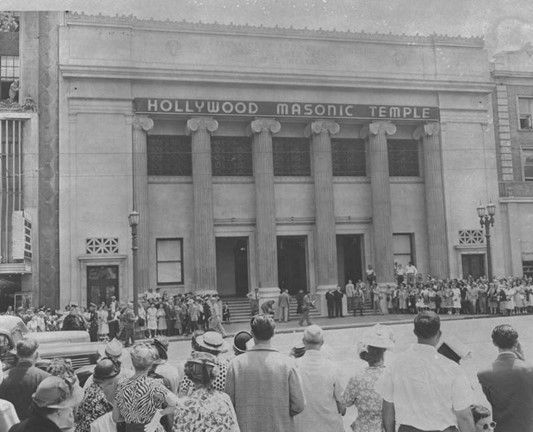
By the late 1970s, membership had declined, and the Masons leased ground floor space to a restaurant. In 1980, the lodge moved out of the building, and membership was relocated to Van Nuys.
In 1982, the Masons sold the building because they could not afford the expense of upgrading the building to meet revised fire and seismic codes. The purchaser of the property was singer Rosita LaBello, who envisioned converting the Masonic Temple into the Hollywood Opera & Theater Company. But LaBello’s ownership was short-lived, with only a few operatic productions.
As a result of the opera and theater company’s financial difficulties, the building was sold back to the lodge. The Masons then sold the property to 6840 Hollywood Associates, an affiliate of Westmark Development. In 1986, the firm leased the space to Detroit real estate developer and nightclub entrepreneur James Hoseyni. Hoseyni renovated and reopened the building as the Hollywood Live Entertainment Pavilions in 1987. The lavish venue featured a 250-seat cabaret, 500-seat jazz theater, and an 800-person dance club. But Hollywood Live did not last long, either.
In 1995, The Walt Disney Company rented what was then known as the Masonic Convention Hall to create a themed environment to promote the premiere of Toy Story at the next door El Capitan Theatre. To continue to use the convention hall as a promotional venue, Disney’s Buena Vista Pictures Distribution purchased the building in 1998. Following the purchase, the building was renovated and renamed the El Capitan Entertainment Centre. The space is also rented out for industry parties, record releases, and product roll-outs. Since 2003, the American Broadcasting Company (ABC)—which is also owned by Disney—has produced its late-night talk show, Jimmy Kimmel Live!, from a studio inside the building.
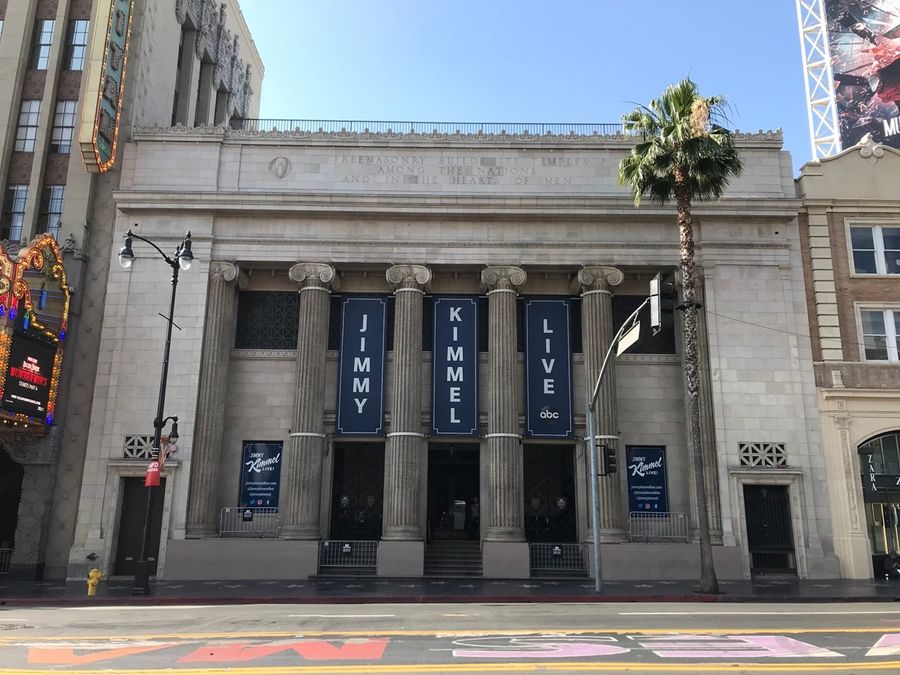
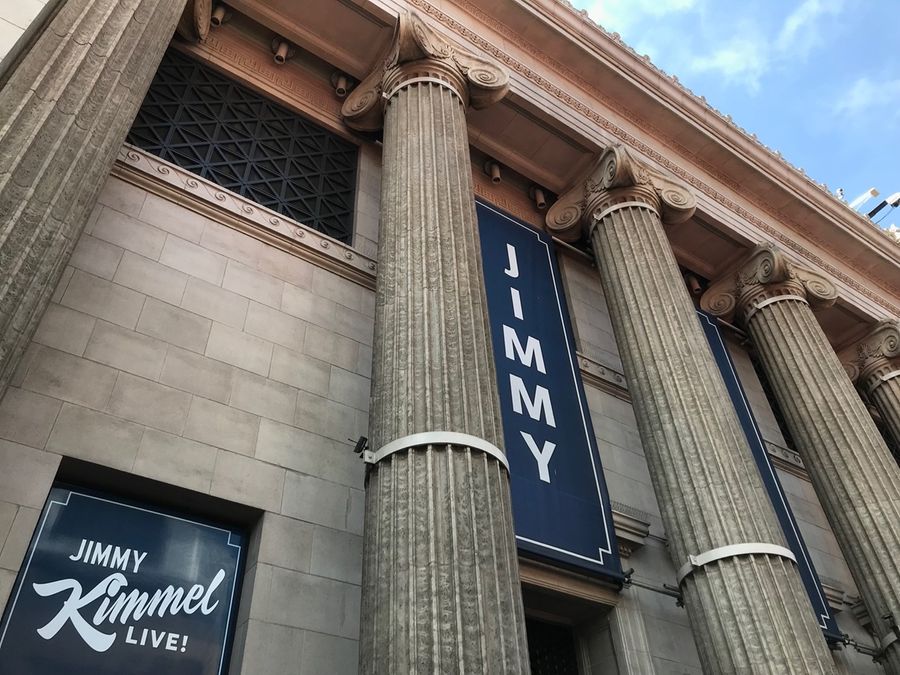
Hollywood Masonic Temple is a fine small-scale example of Neoclassical architecture. It has been part of the Los Angeles landscape for one hundred years, functioning as a fraternal hall, an opera house, a nightclub, and a promotional venue for movie premieres. Now that it is the home of Jimmy Kimmel Live!, locals and tourists can experience the building as audience members for tapings of the show. The historic building lends character to the neighborhood, and can continue to serve the needs of Tinseltown into the future.